The Fossil Rim Veterinary and Animal Care teams provide care for a large variety of animal species, and therefore must have reliable tools and techniques available to safely and effectively handle all those creatures, great and small.
Director of Animal Health Dr. Holly Haefele and her team need to be able to get a variety of things done in the field that both expedite a task and increase their chances of success. She recently explained the function of several tools that help make for a successful day’s worth of accomplishments.
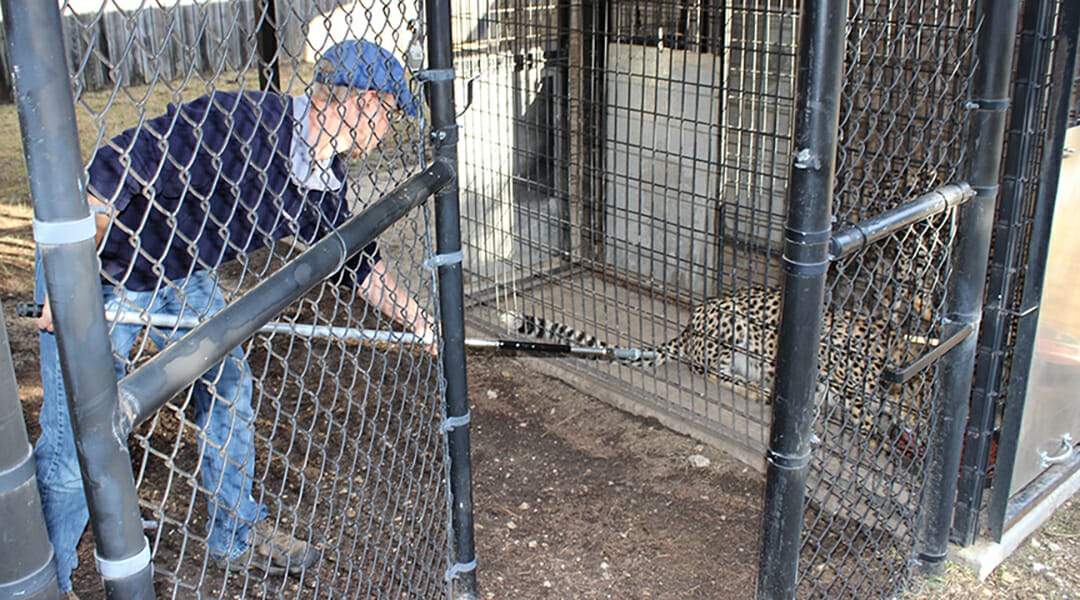
“Have you ever wondered what tools our animal staff members have available to provide care to our animals?” Haefele said. “Here are a few indispensable items that help us handle, immobilize, and administer drugs to our patients. These tools and techniques are utilized by both our veterinary team and the animal care specialists.”
Pneu-Dart Rifle
“This is basically a modified .22-caliber rifle that projects special drug-holding darts,” she said. “We often use a two-milliliter-sized dart – it holds two milliliters of drugs – to anesthetize our hoofstock. It is a real workhorse, sturdy, very reliable, and pretty easy to use. Similarly, the darts are quite reliable and very rarely fail – important when you only have one shot before an animal runs out of range.

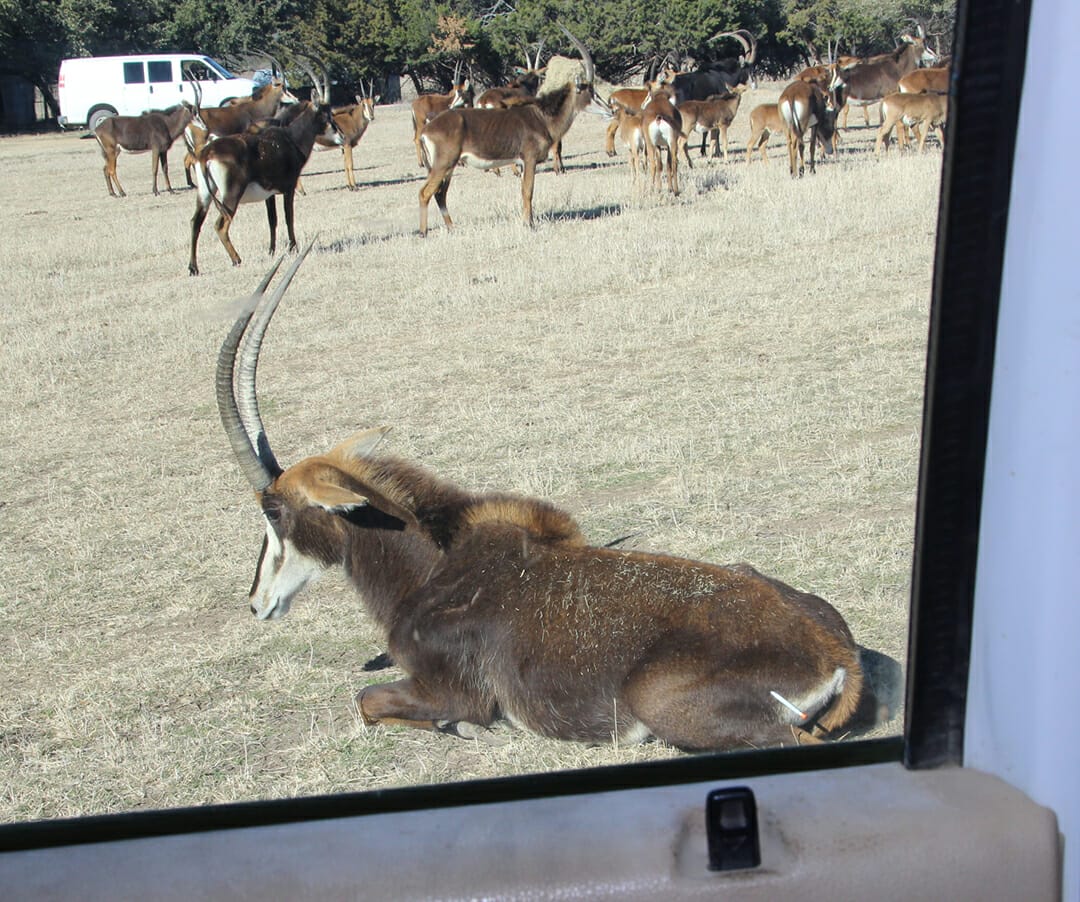
“The rifle fires with a blank gunpowder charge, which pressurizes the barrel and propels the dart. The darts have a small gunpowder charge that fires when they hit the animal, pressurizing the drug chamber and injecting the drugs through a needle attached to the dart.”
Dan-Inject Pistol
“This pistol also fires darts, but it does so via compressed carbon dioxide – like what you use to quickly inflate your bicycle tires – to propel the dart through the barrel,” Haefele said. “The darts are different, too. A chamber separate from the drug chamber is pressurized via syringe. Compressed air injects the drugs upon impact, because a small silicone sleeve is pushed back by the animal’s skin, exposing small holes in the needle, thus allowing the drugs to flow out.
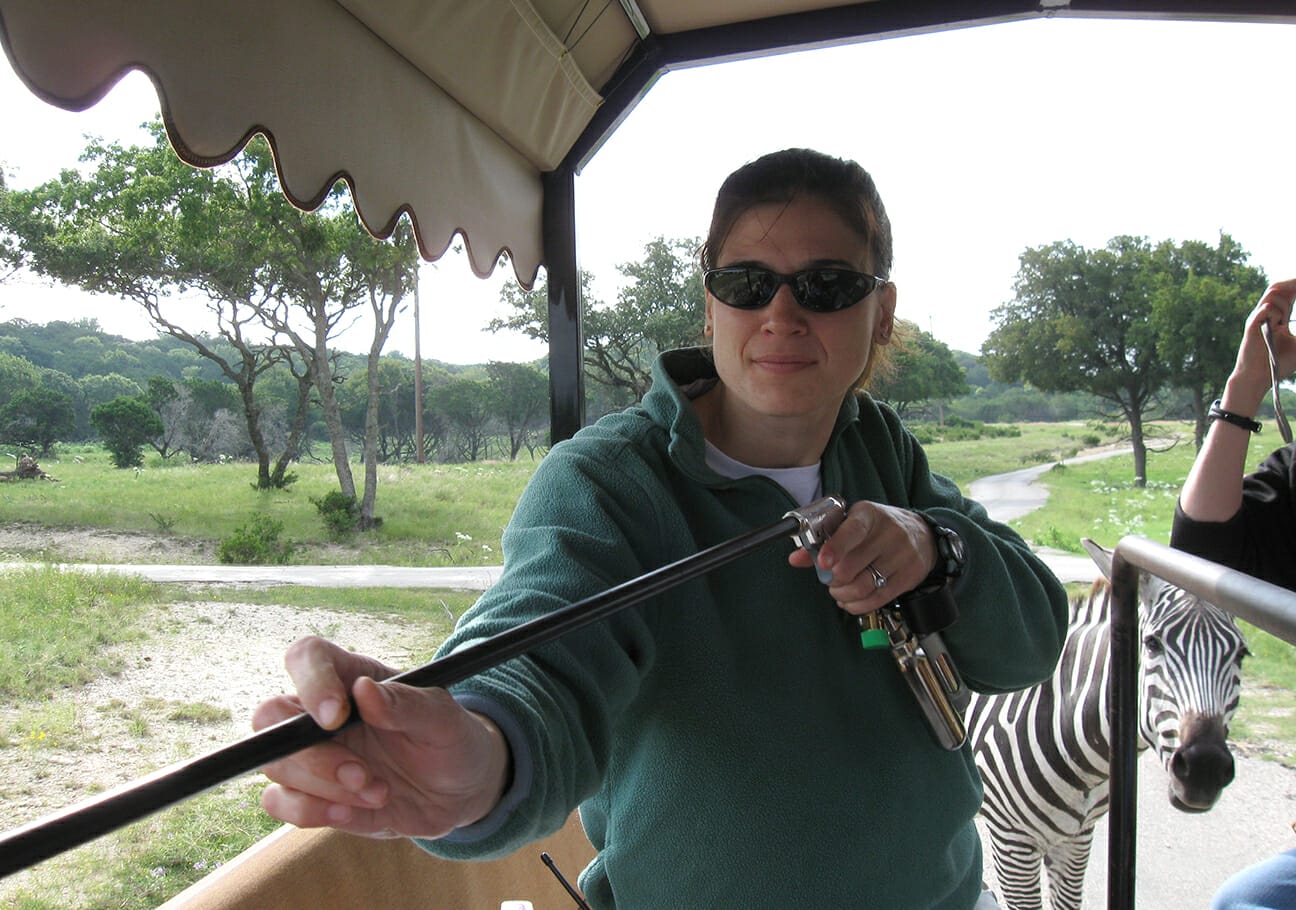
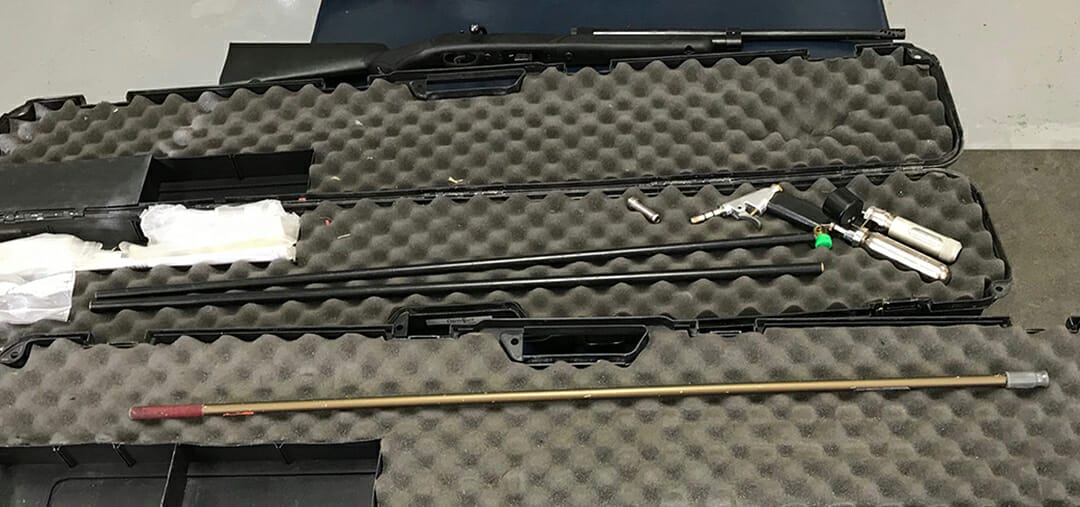
“This pistol is more finicky than the rifle, but it works well for certain things. Its major advantage is that it’s gentle and causes little muscle trauma, so you can even use the pistol on cheetahs and wolves. We usually use it in the pens at the vet clinic where animals are close by or for giraffe anesthesia.”
Dan-Inject Jabstick
“This is a very fancy, spring-powered pole syringe,” she said. “It is awesome and a great tool for us. There is a syringe that can hold as much as 12 milliliters of drugs that mounts on the end of a six-foot pole. After cocking the device, a strong spring is charged and it provides the injection power once the needle on the syringe sinks into the muscle.
“Injection is very fast. This tool is used frequently for vaccination when you can get close enough to the animal; for example, we might use it on a giraffe, zebra, red deer, cheetah or wolf. It is used for anesthesia induction, too.”
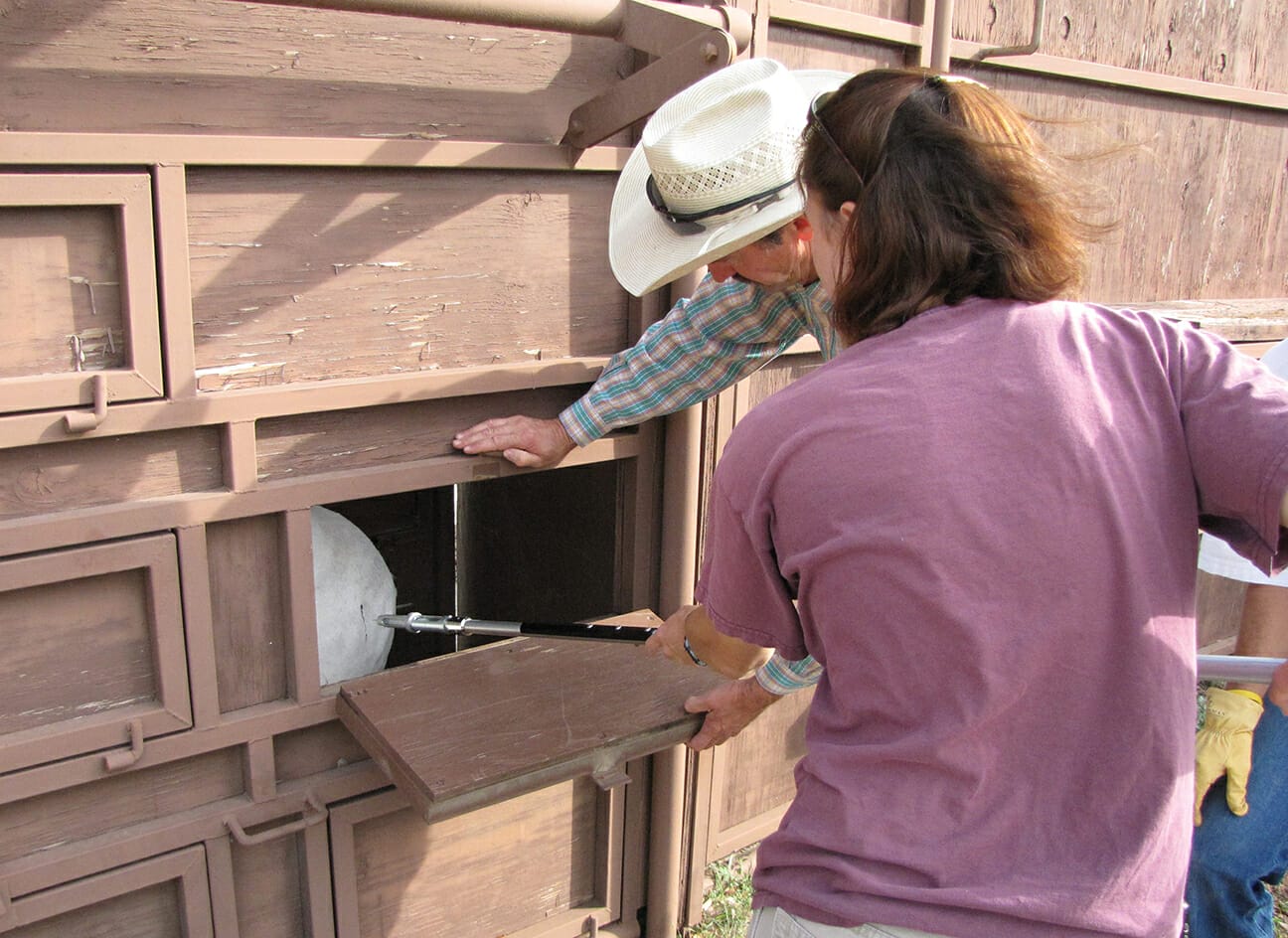
Haefele recalled a memorable use of the jabstick years ago when Fossil Rim had approximately 25 Grant’s zebras that needed to be immobilized, as that herd was to be replaced by Hartmann’s mountain zebras.
“We actually invested in this pole syringe specifically for that project,” she said. “When we went out with a tour van, we lured the zebras in with feed pellets. As they were feeding on the road, we poked them in the large neck muscles from above. Heads came up fast, as the zebras looked around as if to wonder what large bug had just stung them.
“When they went back to eating, many fell asleep right on the road! Had we darted them, they would’ve run all over the pasture. That would’ve riled up the whole herd and prolonged their anesthetic induction; we would not have been successful at a second zebra capture.”
Blow Pipe
“This is probably just like a blow pipe you would imagine, except maybe fancier,” Haefele said. “It propels the same type of darts as the Dan-Inject pistol. But, it has become almost obsolete with our purchases of the pistol and pole syringe.”
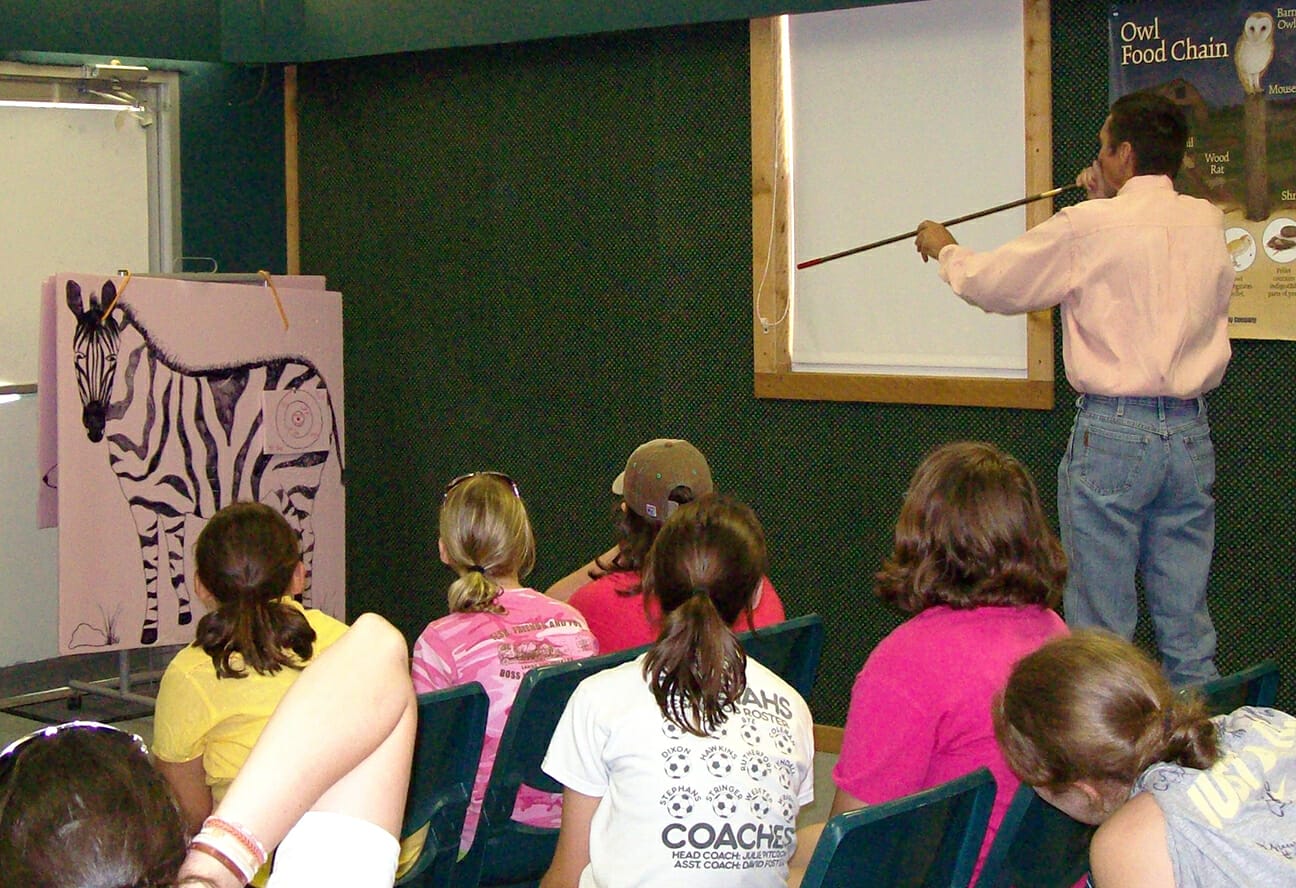
Net Gun
“While we don’t use this gun often, it is very handy for specific situations,” she said. “For example, this is what we used to catch ‘Ethan’ the wildebeest calf when she was one day old. It allows us to avoid anesthesia in cases that may be challenging. The gun propels a square net with weights at the corners that flies out and lands on the animal.
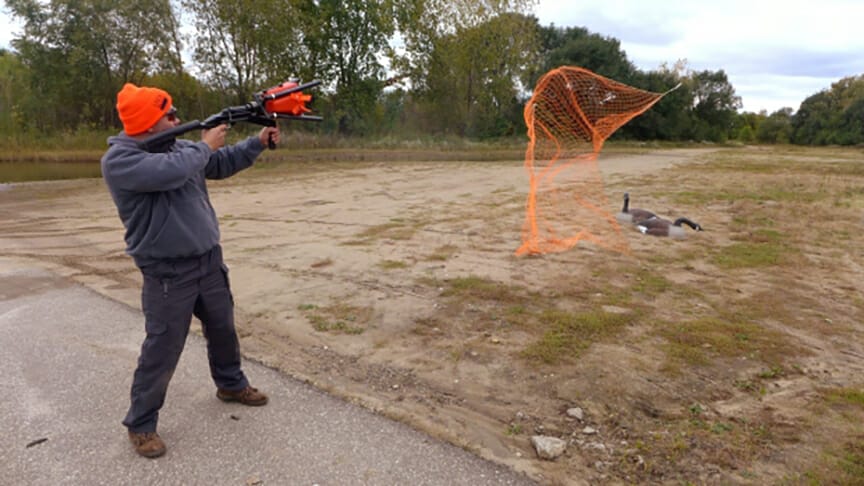
“They get a bit tangled up in it and can’t run away. That is when we grab them.”
Human Hands & Y Pole
“Sometimes, we just grab animals with the tools we were born with,” Haefele said. “Smaller, horned antelope can be pretty easily grabbed from a truck window – well, easily if you are strong and a trained animal care staff member – or in a dark, padded room. Sometimes, we add to our hands and use nets or Y poles – picture a long handle with a well-padded ‘V’ at the end. Y poles are often used for wolves, while nets are effective for cheetah cubs and birds.”

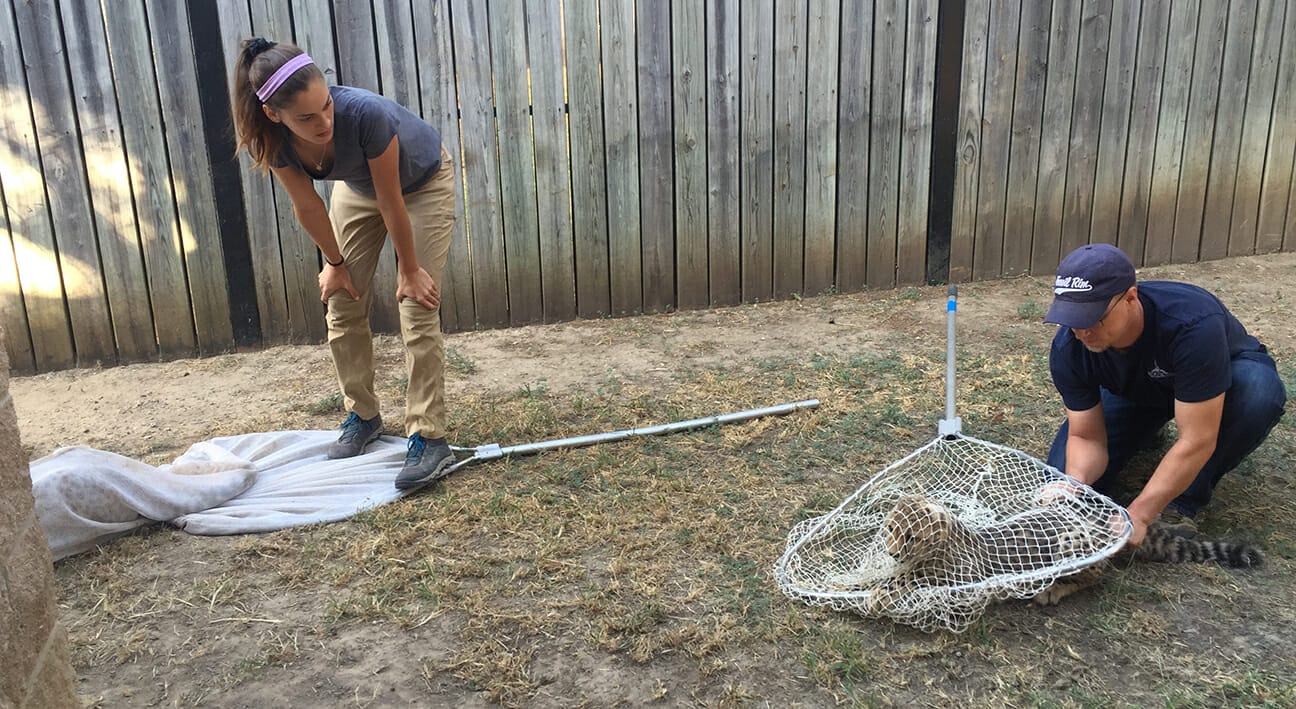

Haefele and Director of Animal Care Adam Eyres both have many years of experience at Fossil Rim, which helps them know which method may be most effective for a particular objective.
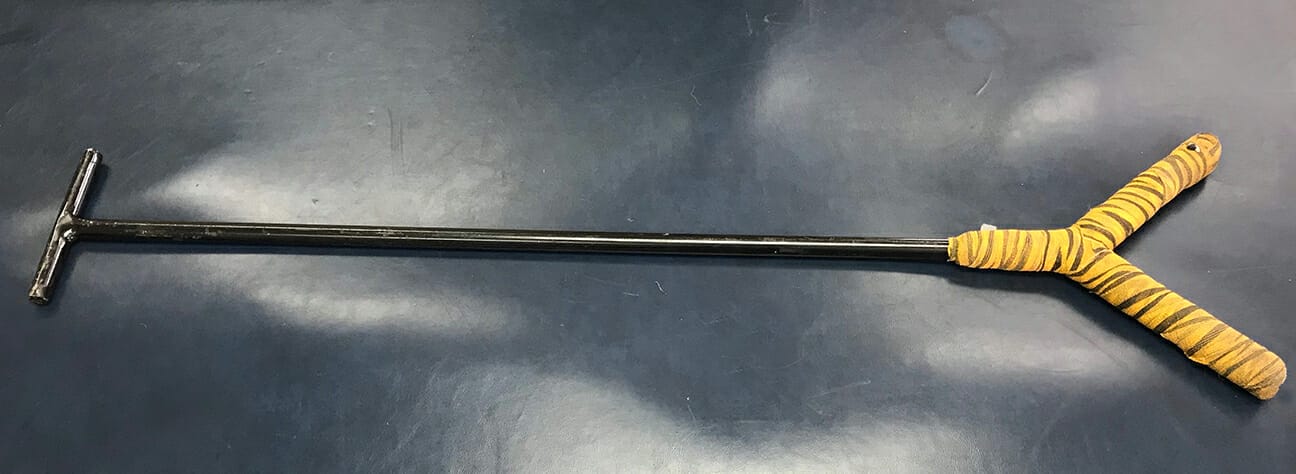
“The tools and techniques discussed here are not all inclusive, but this gives you an idea of what we have handy and tend to rely on for animal capture,” she said. “Other methods include passive capture of a herd in a smaller yard or pasture, as well as the drop-floor chute, among other options. Our very knowledgeable teams use their experience to guide them in choosing the most appropriate tool or technique.”
-Tye Chandler, Marketing Associate

Very informative — keep up the posts
Will do, thanks!
Whoa! Cool info! Thanks for the informative piece.
Glad you enjoyed it! 🙂